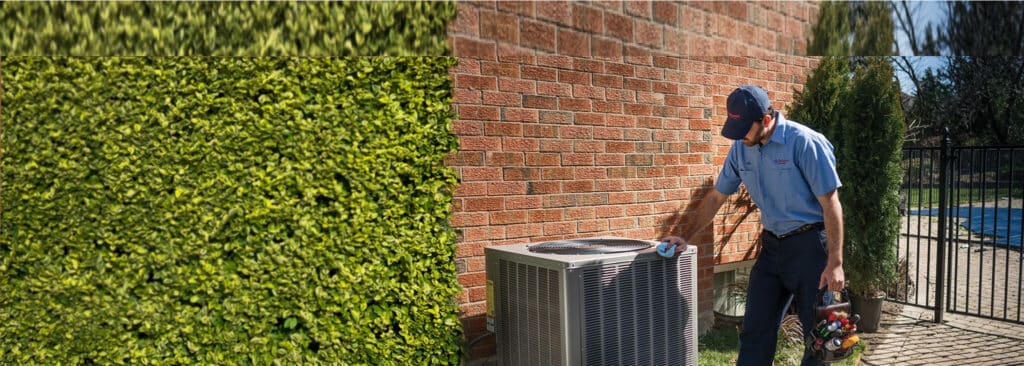How an Air Conditioner Works
The question of how an air conditioner works is one we get a lot and knowing how your AC works will allow you to make the right call when considering a new unit or when you need a repair.

The question of how an air-conditioner works is on one that we get a lot and knowing how your AC
works allows you to make the right call when considering a new unit or deciding whether
or not you need to repair. The thermostat in your home which controls the temperature for
both heating and cooling has a gauge that tells your air conditioner to turn on or off. Now the
cooling process itself goes through three main parts and relies on both your furnace
and AC to work together. First, there’s the blower motor, the part of your furnace that
circulates air throughout the home. Second, is the evaporator coil which is located above
the furnace and the third component is the condenser which sits outside of your home
and connects to the evaporator by two pipes which hold the refrigerant. When your AC is turned on,
the blower motor draws warm air into the system, sends that air through the evaporator coil to
cool it down and then pushes cold air back out throughout the home. But you might be asking, how
does the cooling happen? Well, the evaporator uses cold refrigerant to absorb heat, remove humidity
from that warm air. That refrigerant is then sent back out to the condenser to be cooled once again.
This constant loop of removing warm air from the home is how an AC works. Knowing this, it’s also
important to point out that a properly sized unit that is regularly maintained is needed for
your AC to be as efficient as possible. Having an AC that is the right size for your home can
also help keep the humidity levels optimal. Remember if you need a new air conditioner,
Call on Reliance™ to schedule time with one of our trusted Home Comfort Advisors. You can count
on us to assess your home’s needs and make the right recommendation for you and your family.
The thermostat in your home, which controls the temperature for both heating and cooling, has a gauge that tells your air conditioner to turn on or off.
Now, the cooling process itself goes through 3 main parts and relies on both your furnace and AC units working together:
First, there is the blower motor, that part of your furnace that circulates air throughout the home.
Second, there is the evaporator coil which is located above the furnace.
And the third component is the condenser, which sits outside of your home and connects to the evaporator by 2 pipes which hold the refrigerant.
So when the AC is turned on, the blower motor draws warm air into the system, sends that air through the evaporator to cool it down, and then pushes cold air back out throughout home.
But, you might be asking how the cooling happens. Well, the evaporator uses cold refrigerant to absorb heat and remove humidity from the warm air.
That refrigerant is then sent back out to the condenser to be cooled once again. This constant loop of removing warm air from the home is how an AC works.
Knowing this, it’s also important to point out that a properly sized unit that is regularly maintained is needed for your AC to be as efficient as possible. Having an AC that is the right size for your home can also help to keep your humidity levels optimal.
Remember, if you need a new air conditioner Call on Reliance® to schedule time with one of our trusted Home Comfort Advisors. You can count on us to assess your home’s needs and make the right recommendation for you and your family.








